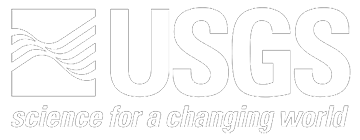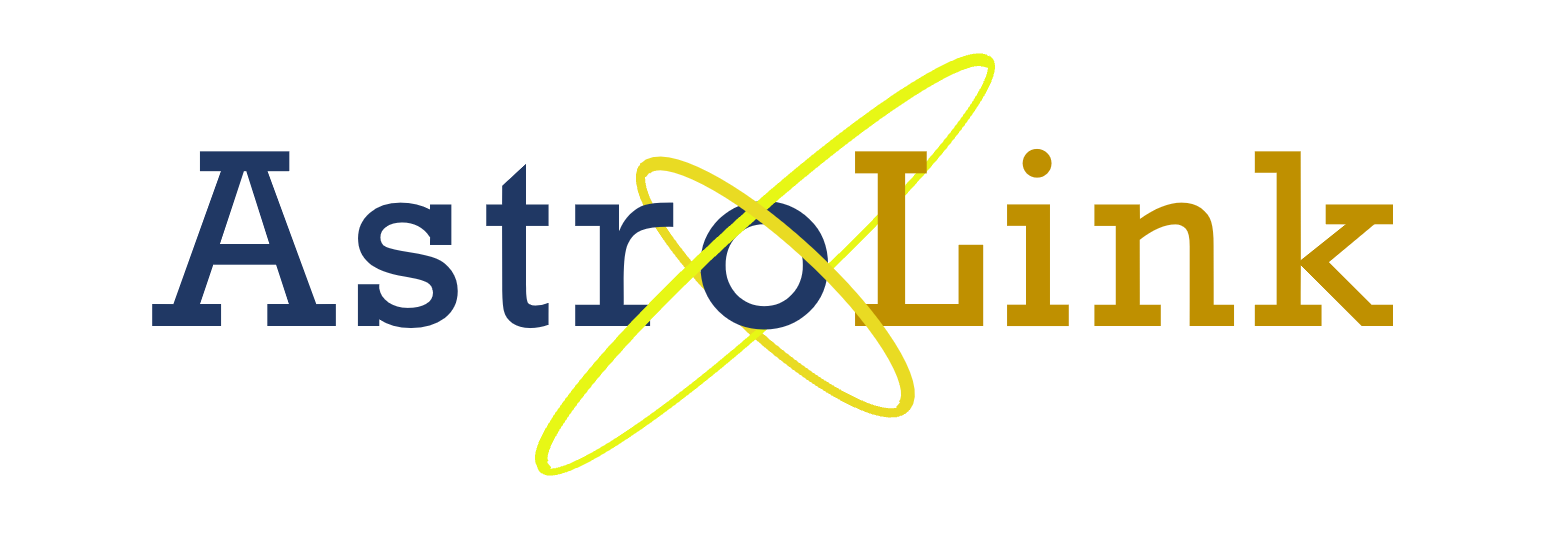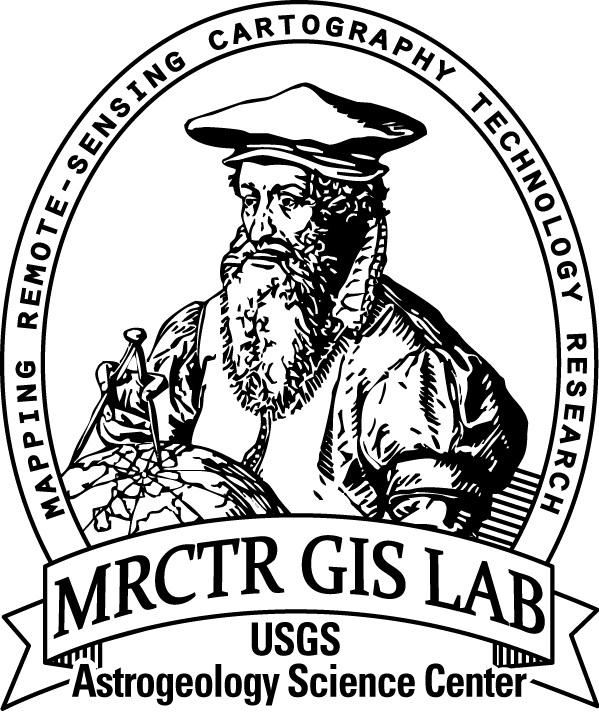Moon Clementine UVVIS 5 Band Warped Image Mosaic 200m
- Primary Authors
- Trent Hare
- Originators
- Eric Eliason, Chris Isbell, Ella Lee, Tammy Becker, Lisa Gaddis, Alfred McEwen, Mark Robinson
- Publisher
- USGS Astrogeology Science Center
- Publication Date
- 2008-03-01
- Abstract
- Product Information: The Clementine Ultraviolet/Visible (UVVIS) mosaic of Earth's Moon is a radiometrically and geometrically controlled, photometrically modeled global Mosaicked Digital Image Model (DIM) compiled using more than 400,000 images from multiple spectral observations of the Ultraviolet/Visible camera onboard the Clementine Spacecraft (Eliason, et al., 1999). The mosaic is composed of the 415nm, 750nm, 900nm, 950nm, and 1000nm wavelength as a single 5 band image. This version was warped from the original spatial location using the ULCN2005 control network (Hare, et al, 2008). Resolution of this mosaic is 200 meters per pixel (m). Mission and Instrument Information: On January 25, 1994, the Deep Space Program Science Experiment (DSPSE), better known as Clementine, was launched from Vandenburg Air Force Base aboard a Titan IIG rocket, as a joint project between the and was jointly sponsored by the Ballistic Missile Defense Organization (BMDO) of the Dept of Defense and NASA. The objective of the mission was to test sensors and spacecraft components under extended exposure to the space environment and to make scientific observations of the Moon and a near-Earth asteroid (1620 Geographos). After two Earth fly-bys, lunar insertion was achieved on February 19th. Lunar mapping took place over approximately two months in two systematic mapping passes over the Moon. After the spectacular success of the Lunar mapping phase of the mission, Clementine suffered an on-board malfunction on May 7, 1994 that resulted in the activation of its altitude thrusters. This exhausted all the fuel for altitude control and left the spacecraft spinning at 80 revolutions per minute. The result of the malfunction prevented Clementine from performing the planned close fly-by of the near-Earth asteroid Geographos scheduled for August 1994. The main instrumentation on Clementine consisted of four cameras, one with a laser-ranging system. The cameras included an ultraviolet-visual (UVVIS) camera, a long-wavelength infrared (LWIR) camera, the laser-ranger (LIDAR) high-resolution (HIRES) camera, and a near-infrared (NIR) camera. The spacecraft also had two star tracker cameras (A-STAR, B- STAR), used mainly for attitude determination, but they also served as wide-field cameras for various scientific and operational purposes (PDS IMG, 2017). References: Eliason, E., Isbell, C., Lee, E., Becker, T., Gaddis, L., McEwen, A., Robinson, M., Mission to the Moon: The Clementine UVVIS Global Lunar Mosaic, PDS Volumes USA_NASA_PDS_CL_4001 through 4078, produced by the U.S. Geological Survey and distributed on CD media by the Planetary Data System, 1999. Hare, T. M., Archinal, B. A., Becker, T. L., Lee, E. M., Gaddis, L. R., Redding, B. L., & Rosiek, M. R. (2008). Clementine Mosaics Warped to ULCN 2005 Network. Paper presented at the 39th Lunar and Planetary Science Conference, Lunar and Planetary Institute, Houston, TX. https://www.lpi.usra.edu/meetings/lpsc2008/pdf/2337.pdf Planetary Data Systems (PDS) Cartography and Imaging Sciences Node (IMG) (2017). Clementine Mission. https://pds-imaging.jpl.nasa.gov/portal/clementine_mission.html
- Purpose
- This 5 band image allows one to create band-ratio derived images including titanium abundance, optical maturity maps, and various other mineral ratios.
Contact and Distribution
- Format
- Global Mosaic, Mineral Map, Remote-sensing Data
- Access Constraints
- None
- Access Scope
- PDS
- Use Constraints
- None
- Edition
- 1
- Supplemental Information
- http://www.lpi.usra.edu/meetings/lpsc2008/pdf/2337.pdf, http://pdsimage.wr.usgs.gov/archive/clem1-l-u-5-dim-uvvis-v1.0/cl_4001/document/volinfo.htm, http://pubs.usgs.gov/of/2006/1367/, https://pds.nasa.gov/ds-view/pds/viewProfile.jsp?dsid=CLEM1-L-H-5-DIM-MOSAIC-V1.0
- Native Data Set Environment
- ISIS v3
- Astrogeology Theme
- Cartography, Image Processing, Remote Sensing
- Mission Names
- Clementine
- Instrument Names
- UVVIS
- Online Package Link
- https://astrogeology.usgs.gov/search/map/moon_clementine_uvvis_5_band_warped_image_mosaic_200m
- External File Size
- 14 GB
- Online File Link
- https://planetarymaps.usgs.gov/mosaic/Lunar_Clementine_UVVIS_WarpMosaic_5Bands_200m.tif
- Access Instructions
- You will need an image viewer, remote sensing, or GIS application to view.
- Contact Address
- 2255 N. Gemini Drive
- Contact City
- Flagstaff
- Contact State
- AZ
- Contact Postal Code
- 86001
- Contact Email
- astroweb@usgs.gov
Data Status and Quality
- Time Period of Content (start)
- 1994-01-25
- Time Period of Content (stop)
- 1994-05-07
- Currentness Reference
- Ground condition
- Progress
- Complete
- Update Frequency
- None planned
- Logical Consistency
- For the original mosaic approximately 265, 000 match points were collected at the USGS from ~43, 000 UVVIS 750nm images providing global coverage. About 80% of these points were collected via autonomous procedures, whereas the remaining 20% required the more time consuming but highly accurate pattern-recognition capability of the human eye-brain.
- Completeness Report
- The basemap has 95% coverage of the Moon (excluding the oblique observation gap fills).
- Process Description
- To facilitate warping we utilized the warp command within Esri's Arc/Info Workstation. Tests showed that a 6th order warp was needed. During the warp, we used a bilinear resampling since this routine optimizes the output pixel resolution. Thus before releasing the tiles to the community, they were again bilinearly resampled to the original resolution (Hare et al., 2008). The original Clementine UVVIS mosaic was geometrically controlled to the previously published Clementine Basemap Mosaic by tying individual UVVIS images that make up a color set to the corresponding image in the color set that was used to produce the basemap mosaic (Eliason et al., 1999). To convert the 16-bit integer values found in the image arrays of the UVVIS multispectral mosaic to fractional reflectance an offset and scaling factor need to be applied as shown: FRACTIONAL_REFLECTANCE = (SCALING_FACTOR * DN) where: DN = 16-bit pixel value of UVVIS DIM image array. SCALING_FACTOR = 1.3700E-04
Lineage
- Process Date
- 2008-01-01
- Source Title
- The Clementine UVVIS Global Lunar Mosaic
- Source Online Linkage
- {https://pds-imaging.jpl.nasa.gov/volumes/clementine.html,https://pds-imaging.jpl.nasa.gov/portal/clementine_mission.html}
- PDS Status
- PDS 3 Like
- Horizontal Positional Accuracy Report
- Accurate to Control Net
Geospatial Information
- Target
- Moon
- System
- Earth
- Minimum Latitude
- -90
- Maximum Latitude
- 90
- Minimum Longitude
- -180
- Maximum Longitude
- 180
- Direct Spatial Reference Method
- Raster
- Object Type
- Grid Cell
- Raster Row Count (lines)
- 27273
- Raster Column Count (samples)
- 54545
- Bit Type (8, 16, 32)
- 16
- Quad Name
- Radius A
- 1737400
- Radius C
- 1737400
- Control Net
- ULCN 2005
- Bands
- 5
- Pixel Resolution (meters/pixel)
- 200.1341
- Scale (pixels/degree)
- 151.515
- Map Projection Name
- Simple Cylindrical
- Latitude Type
- Planetocentric
- Longitude Direction
- Positive East
- Longitude Domain
- -180 to 180




















